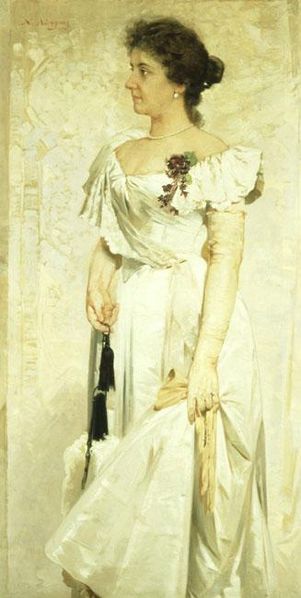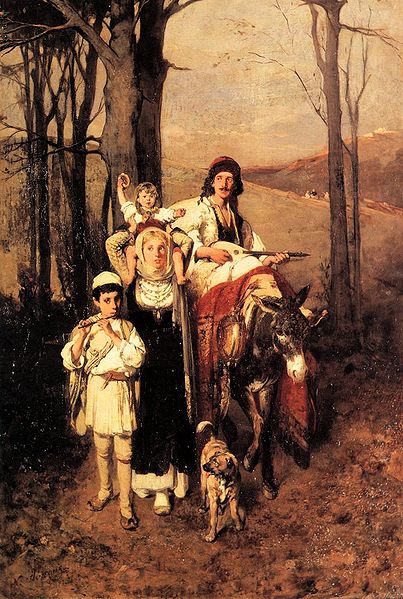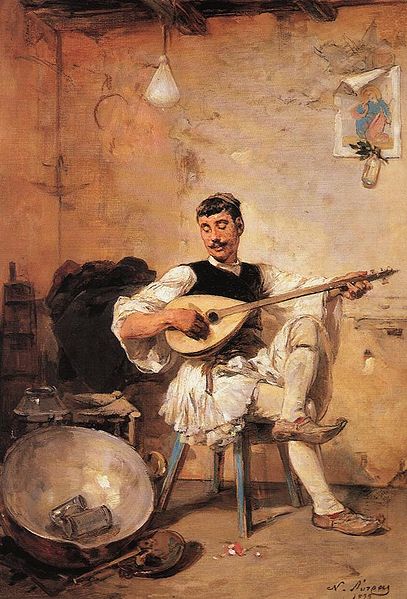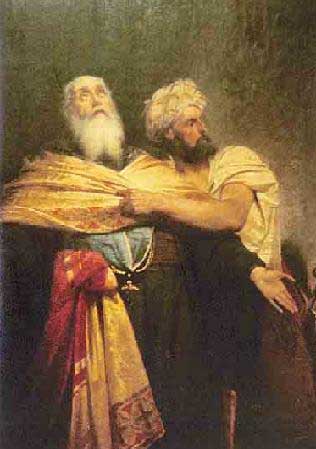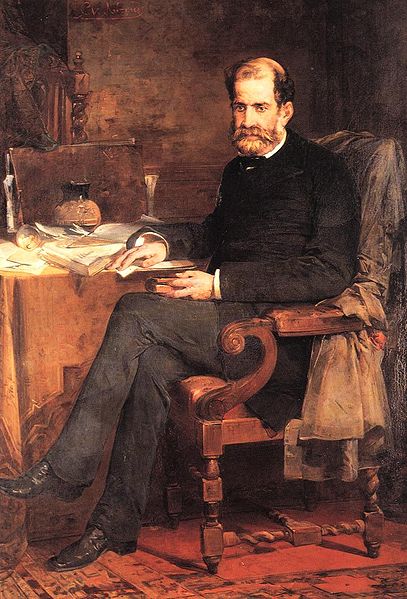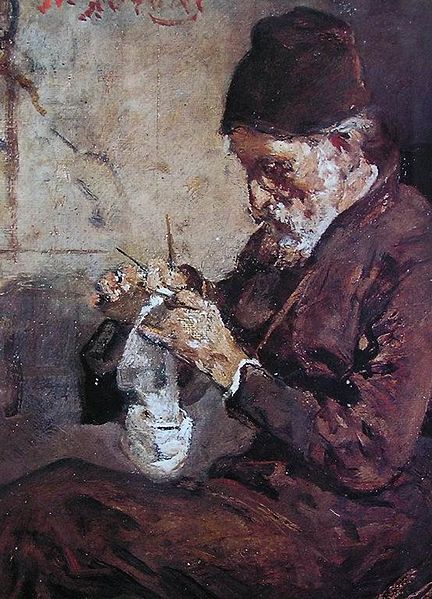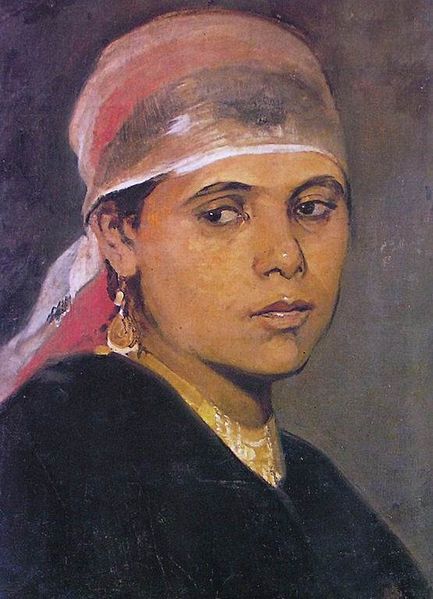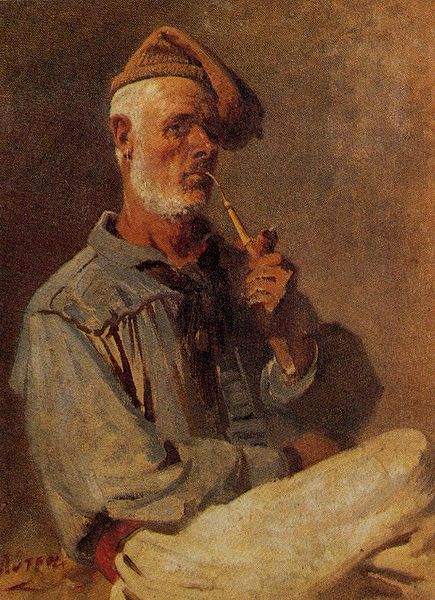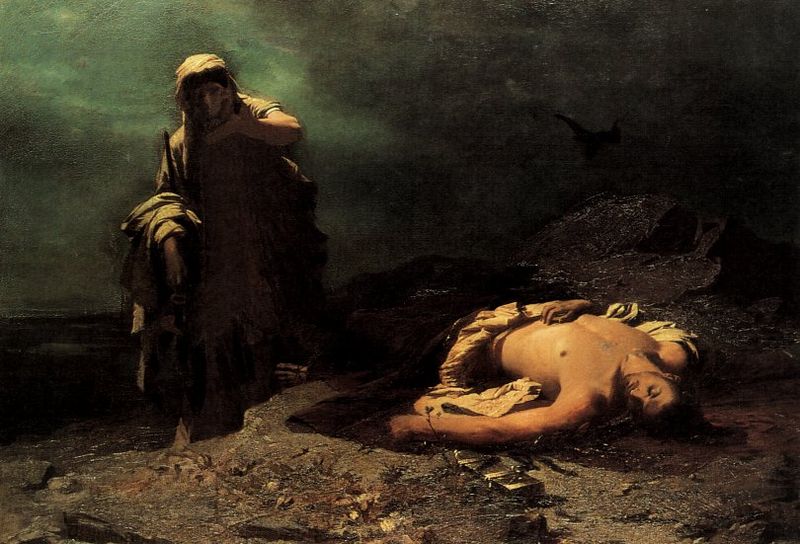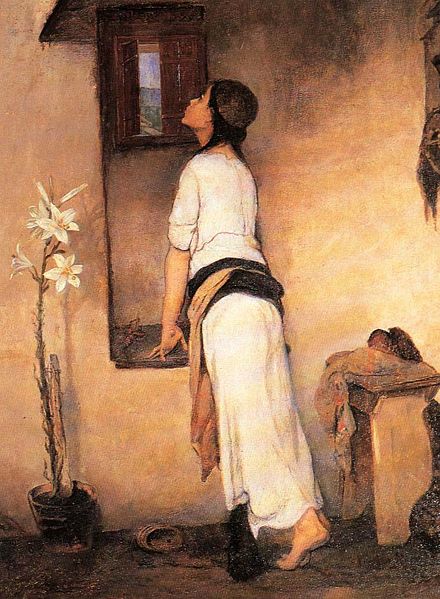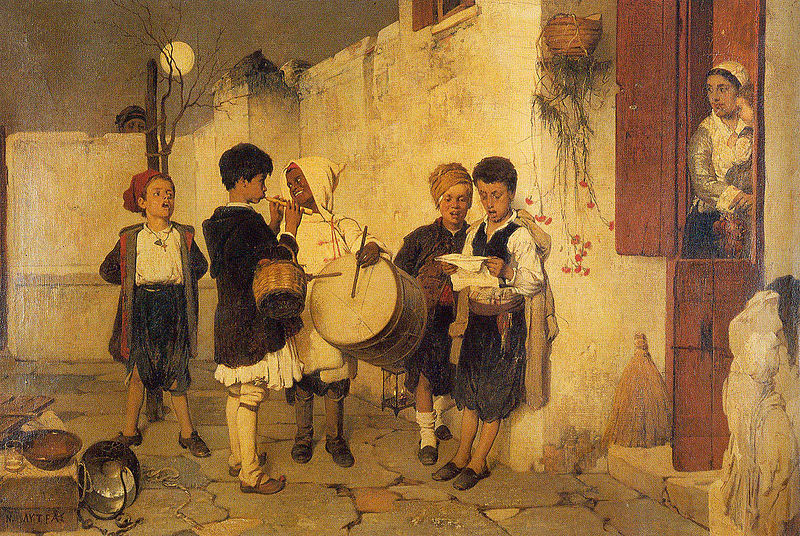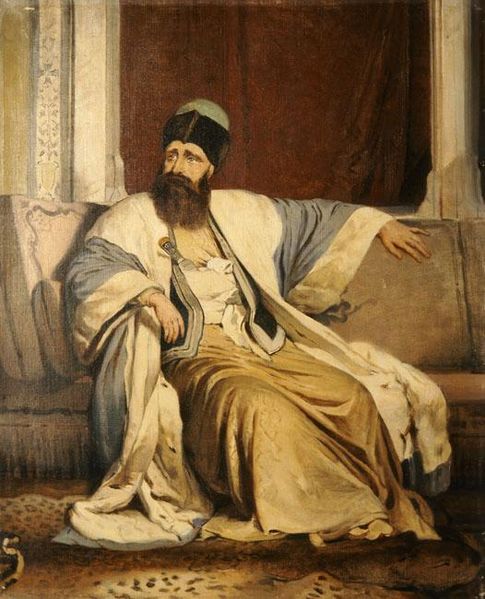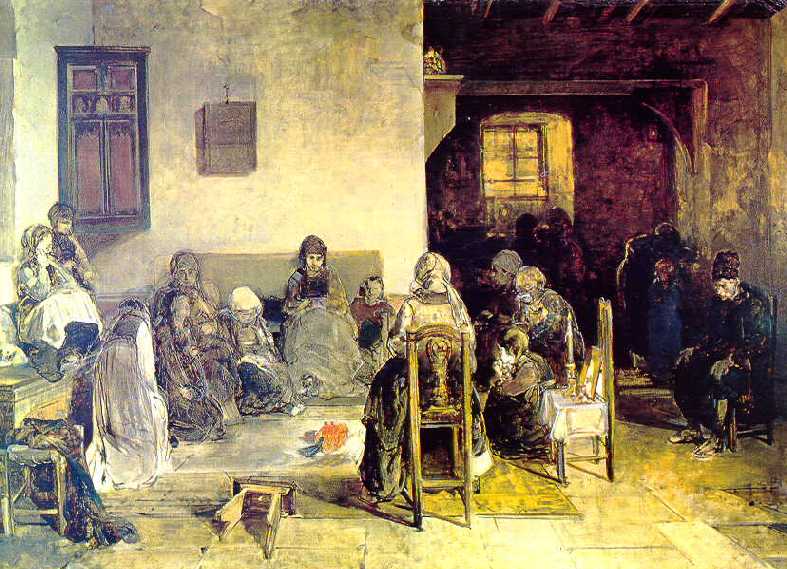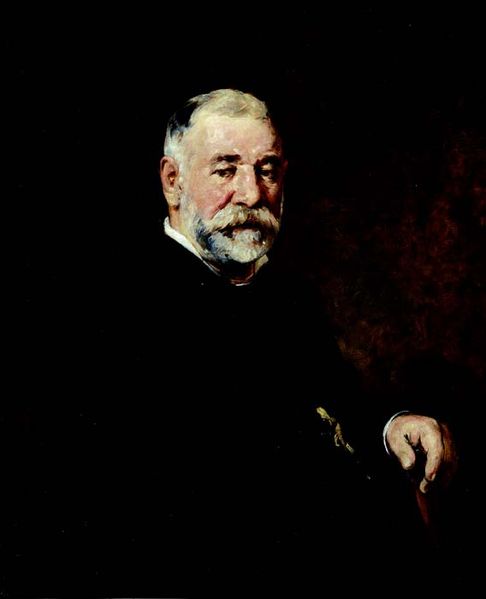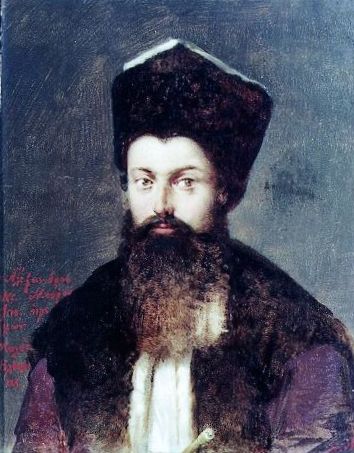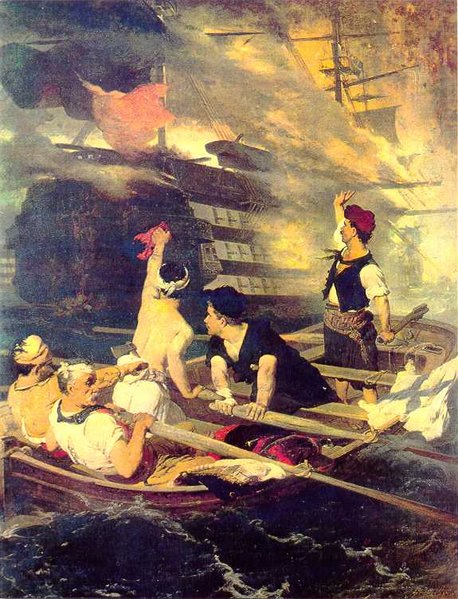<Back to Index>
- Painter Nikiphoros Lytras (Νικηφόρος Λύτρας), 1832
PAGE SPONSOR
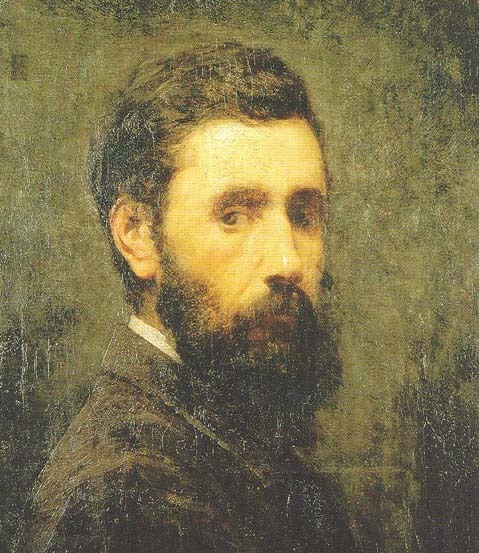
Nikiphoros Lytras (Greek: Νικηφόρος Λύτρας; 1832, Pyrgos, Tinos – June 13, 1904, Athens) was a nineteenth century Greek painter.
He was born in Tinos, and trained in Athens at the School of Arts. In 1860 he won a scholarship to Royal Academy of Fine Arts of Munich. After completing these studies, he became a professor at the School of Arts in 1866, a position he held for the rest of his life. He remained faithful to the precepts and principles of the academism of Munich, while paying greatest attention both to ethnographic themes and portraiture. His most famous portrait was of the royal couple, Otto and Amalia, and his best known landscape a depiction of the region of Lavrio.
Nikiphoros Lytras was a child of a popular marble sculptor. In 1850 at the age of eighteen years he went to Athens to study in the School of Arts. He studied painting with Ludwing Thierch and Raffaelo Ceccoli. After his graduation in 1856 he started teaching there the course of Elementary Writing. In 1836 with a Greek government’s scholarship he went to Munich to study in the Royal Academy Of Fine Arts. His teacher there was Karl von Piloty. In 1862 after King Otto was exiled the scholarship was no longer available to Lytras so the expenses were undertaken by the ambassador of Greece in Vienna Simon Sinas. In the summer of 1865 before his return to Greece he met Nicholaos Gyzis in Munich. There they visited and studied a lot of art masterpieces. Upon his return in Athens Lytras became professor in the Athens School of Fine Arts in the department of Painting and he taught there for 38 years. In 1873 and for four years he travelled to Smyrna and Asia Minor, Munich and Egypt with Nicholaos Gyzis. In 1879 he married Irene Kyriakidi daughter of a tradesman from Smyrna and they had six children.
His son Nikolaos Lytras followed in his footsteps by also studying at the Munich academy of Fine Arts and also heading the Athens School of Art. In later life he founded the 'Art Group', which many years later in 1919 exhibited in Paris, with participants including the engraver Demetrios Galanis, a friend of Derain, Braque and Picasso and a member of the French Academy. The nineteenth century painters Ioannis Altamouras and Periklis Pantazis (both of whom died young) may be regarded as forerunners of this group.
Nikiphoros Lytras died at the age of 72 in 1904, after a short illness that is believed to have been caused by colours’ chemical substances. After his death Georgios Jakobides took his place in the Athens School of Fine Arts.
During the period that Lytras was Piloty’s student he focused in History painting. His subjects were inspired from Greek Mythology and Greek history. After his return to Greece he started to paint portraits and every day
life scenes. Lytras’ paintings about every day life correspond to the
ideology of the ruling class of the times. His trips in Asia Minor and
Egypt enriched his paintings with dark skinned children and other
elements of Anatolia. The last period of his life he painted many scenes
about aging, loneliness and the fear of death. Lytras was one of the
most famous painters in Athens. He participated and was honored in many
exhibitions : in Zappeion’s exchibitions, in Paris (1855, 1867, 1878, 1889 and 1900) and in Vienna (1873).
Also, as the official portraitist in Athens, he painted many
high society citizens of the times. His contribution in art was also
evidenced through his courses in the Athens School of Fine Arts. Even
though he was attached to the school of Academic Realism and stayed away from impressionistic influences,
he marked Greek art history in his own way. In 1930 he was decorated
with the Golden Cross of Savior. In 1909 – after his death - some of his
paintings were exhibited in Piloty’s School (1885 – 1886) in Munich. In
1933 at the Athens School of Fine Arts an exhibition with 186 of Lytras’ paintings was presented.
